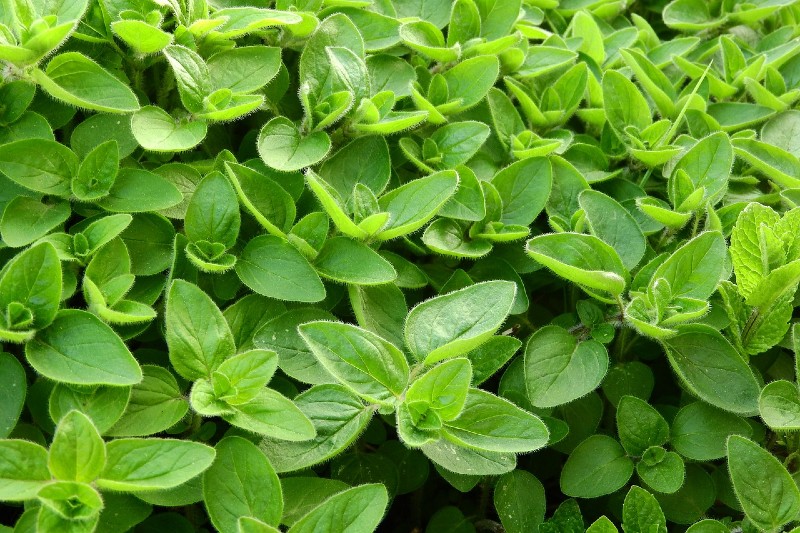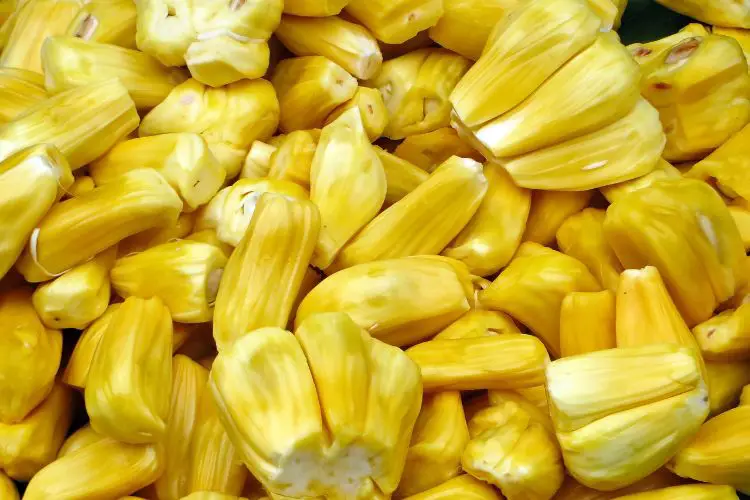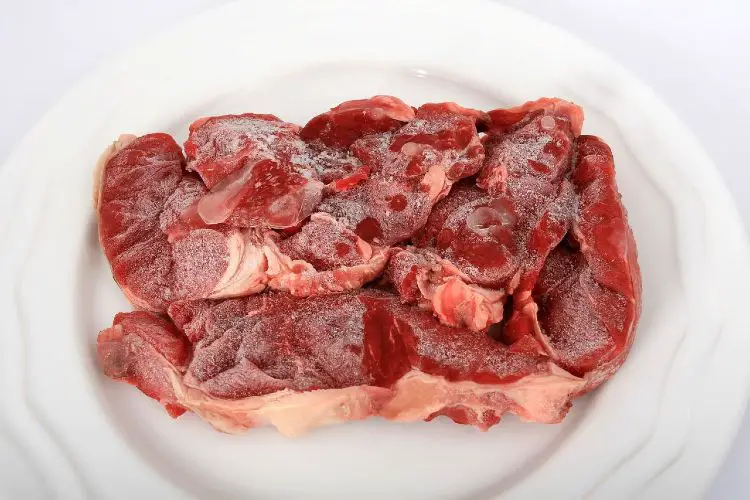What Does Marjoram Taste Like?
Quick Answer
Marjoram has a delicate, aromatic flavor with notes of pine, citrus, and a hint of sweetness. It’s less bitter and more floral than its close relative, oregano. The herb is commonly used in Mediterranean, Middle Eastern, and European cuisines, and pairs well with meats, vegetables, and sauces. Use it sparingly at first, as its flavor can easily dominate a dish.
What Is Marjoram?
Marjoram is an aromatic herb belonging to the mint family, Lamiaceae. It is closely related to oregano but has a milder, more delicate flavor and aroma.
Native to the Mediterranean region, marjoram is commonly used in a variety of cuisines, including Mediterranean, European, and Middle Eastern, to season meats, vegetables, and sauces.
The herb is available in both fresh and dried forms and is often included in spice blends and marinades.
What Does Marjoram Taste Like?
Initial Impressions: Aromatic, Slightly Sweet
- Marjoram’s aroma is one of the first things that hits you, being highly fragrant and slightly sweet.
- Unlike some other herbs, marjoram has a more delicate aroma that is not overpowering, making it versatile in many dishes.
Main Flavor Notes
Marjoram offers a complex yet subtle range of flavors that can be broken down into three primary notes:
- Pine: A mild woodsy tone that adds depth to dishes.
- Citrus: A light, zesty element that brings freshness.
- Slight Sweetness: Adds a delicate sweetness that rounds out the herb’s overall flavor.
Some people also detect a slight spiciness, not unlike a milder form of oregano, which can add depth to a dish.
Together, these flavor notes create a well-balanced, aromatic experience that can elevate a wide variety of dishes.
Subtleties
In addition to its main flavors, marjoram has subtler undertones that complement its primary notes:
- Floral Undertones: A touch of floral notes adds a dash of sophistication to its profile.
- Low Bitterness: Unlike some other herbs like oregano, marjoram is generally less bitter, making it more versatile in different culinary applications.
These subtleties make marjoram a complex herb, perfect for refined palates and adventurous cooks.
Fresh vs Dried: Differences in Flavor Intensity and Applications
Both fresh and dried marjoram have their places in the kitchen, but they offer different experiences:
- Fresh Marjoram: More aromatic and flavorful, ideal for garnishes, salads, and dishes that require a burst of flavor.
- Dried Marjoram: Slightly less potent but holds its flavor well over longer cooking periods, making it suitable for stews, sauces, and marinades.
Comparison with Other Herbs
Understanding how marjoram compares to other herbs can help you make more informed choices in the kitchen, especially when it comes to seasoning and flavor pairings.
Oregano vs Marjoram: Key Differences in Taste and Application
Though they belong to the same mint family and are often mistaken for each other, marjoram and oregano have distinct differences:
- Taste: Oregano has a more robust, pungent, and slightly peppery flavor with a hint of bitterness, whereas marjoram is milder with floral notes and less bitterness.
- Application: Oregano is often used in hearty, robust dishes like pizza, pasta, and grilled meats. Marjoram, with its more delicate flavor, is better suited for lighter dishes like poultry, seafood, and vegetable preparations.
- Substitutability: While you can substitute one for the other in a pinch, be mindful of the quantities, as oregano’s stronger flavor can easily overpower a dish meant for the more subtle marjoram.
Other Similar Herbs and Their Flavor Profiles
- Thyme: Like marjoram, thyme has a subtle, woodsy flavor but lacks the citrus and floral notes. It’s commonly used in roasts and stews.
- Rosemary: This herb has a strong pine-like, woody flavor and is often used in larger cuts of meat like lamb or beef roasts. It lacks the sweetness and floral qualities of marjoram.
- Basil: Offering a more pronounced anise and clove flavor, basil is a go-to herb in Italian and Asian cuisines. It brings a different kind of sweetness and spiciness compared to marjoram.
- Sage: Known for its fuzzy leaves and strong, earthy flavor, sage is a staple in stuffings and pairs well with fatty meats. It doesn’t have the floral or citrus notes that marjoram does.
FAQs
Is Marjoram The Same As Oregano?
While they belong to the same mint family and look similar, marjoram and oregano have distinct flavors. Marjoram is milder and less bitter, with floral and citrus notes, whereas oregano has a stronger, more robust flavor.
Can I Use Oregano As A Substitute For Marjoram?
Yes, you can substitute oregano for marjoram, but be cautious with the amount as oregano has a stronger flavor. It’s advisable to start with half the quantity and adjust according to taste.
What Cuisines Commonly Use Marjoram?
Marjoram is popular in Mediterranean, European, and Middle Eastern cuisines. It is often used in dishes like stews, sauces, marinades, and grilled meats.
Should I Use Fresh Or Dried Marjoram?
Both fresh and dried forms have their advantages. Fresh marjoram is more aromatic and suitable for lighter dishes or as a garnish, while dried marjoram works well in recipes that require longer cooking times.
What Foods Pair Well With Marjoram?
Marjoram pairs well with a wide range of foods including meats like chicken and lamb, vegetables, pasta dishes, and various sauces.
Can Marjoram Be Used In Desserts?
Though less common, marjoram’s slight sweetness and floral notes can be used to infuse syrups, creams, or even baked goods for a unique twist.
How Should I Store Marjoram?
Fresh marjoram should be stored in the refrigerator wrapped in a damp paper towel and placed in a plastic bag. Dried marjoram should be stored in an airtight container in a cool, dark place.
Can Marjoram Be Grown At Home?
Yes, marjoram is relatively easy to grow either in an herb garden or indoors in pots. It prefers well-drained soil and plenty of sunlight.
Does Marjoram Taste Good?
The taste of marjoram is generally considered to be pleasant and aromatic, featuring a combination of pine, citrus, and subtle sweetness with floral undertones. Its delicate yet complex flavor profile makes it a versatile herb in a variety of culinary applications, ranging from meats and vegetables to sauces and spice blends.
Can You Eat Marjoram Leaves Raw?
Yes, you can eat marjoram leaves raw. Fresh marjoram leaves can be used as a garnish or incorporated into salads for a burst of flavor. Their mild, aromatic qualities can enhance a wide range of raw dishes without overpowering other ingredients.
Is Dried Marjoram Better or Fresh Marjoram?
Both dried and fresh marjoram have their advantages and suitable applications:
- Fresh Marjoram: More aromatic and better suited for dishes that require a fresh, vibrant flavor, such as salads and garnishes.
- Dried Marjoram: Slightly less potent but retains its flavor well, making it suitable for recipes with longer cooking times like stews and sauces.
Your choice between fresh and dried will depend on the specific needs of the dish you’re preparing.
What Does Marjoram Sauce Taste Like?
A sauce made with marjoram will have aromatic, citrusy, and slightly sweet elements, along with floral undertones. The herb infuses the sauce with a complexity that can elevate a simple dish. Such sauces often pair well with poultry, pasta, and vegetable dishes.
What Does Marjoram Tea Taste Like?
Marjoram tea has a warm, slightly sweet, and aromatic flavor with hints of citrus and floral notes. It is often described as calming and soothing, making it a popular choice for herbal tea blends aimed at relaxation.
What Flavors Go With Marjoram?
Marjoram pairs well with a variety of flavors:
- Meats: Chicken, lamb, and pork.
- Vegetables: Potatoes, carrots, and zucchini.
- Other Herbs: Thyme, rosemary, and basil.
- Spices: Garlic, black pepper, and cumin.
Its versatility allows it to be incorporated into a wide range of dishes and cuisines.
What Does Marjoram Smell Like?
Marjoram has a pleasant aroma that is often described as sweet, floral, and slightly woody. Its scent is less robust than that of oregano and has a more delicate complexity that includes hints of citrus.
Is Marjoram Good With Chicken?
Marjoram pairs exceptionally well with chicken. Its subtle flavors complement the mildness of chicken without overwhelming it, and it can be used in a variety of preparations, including grilling, roasting, and in sauces or marinades.



